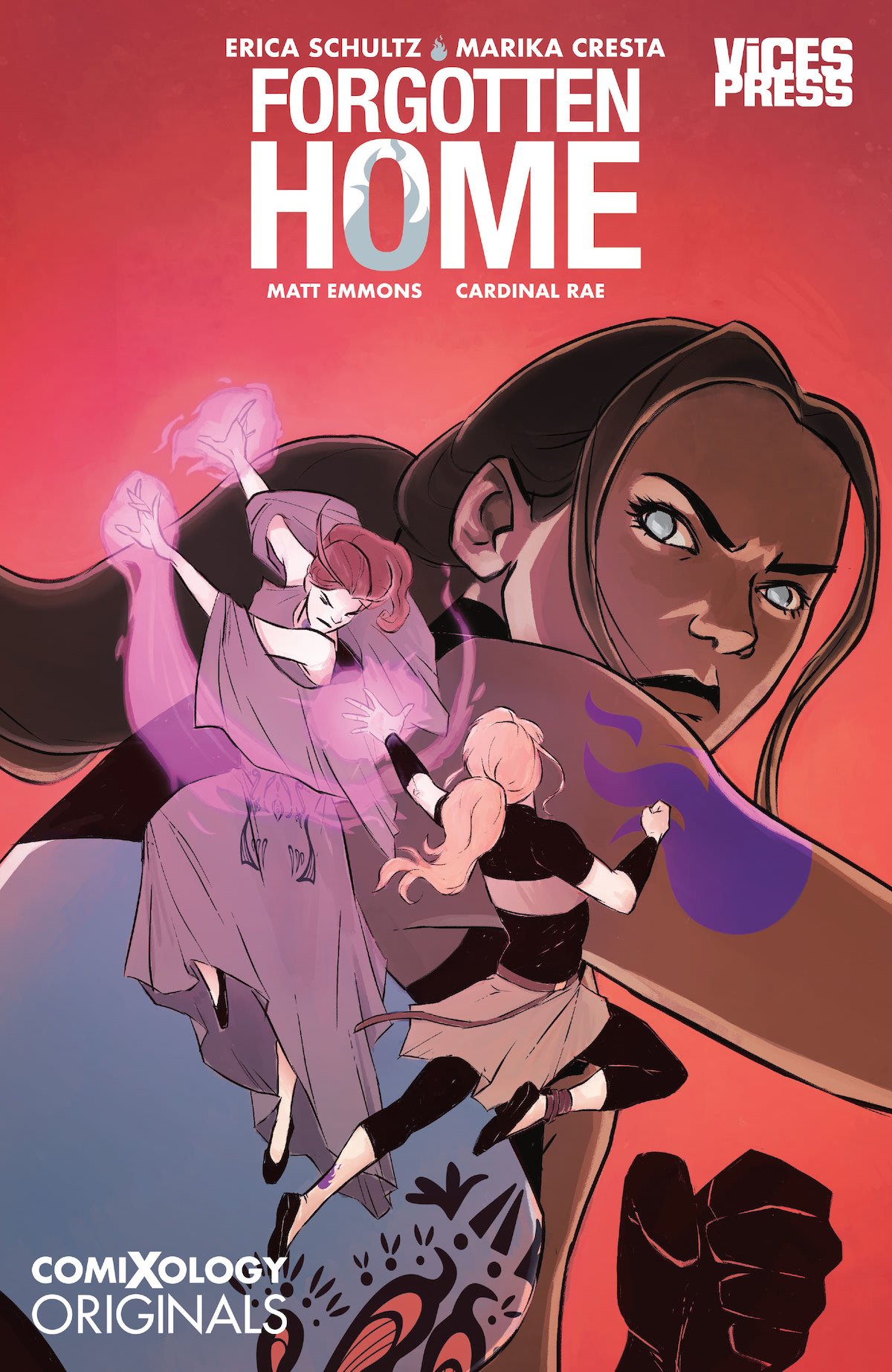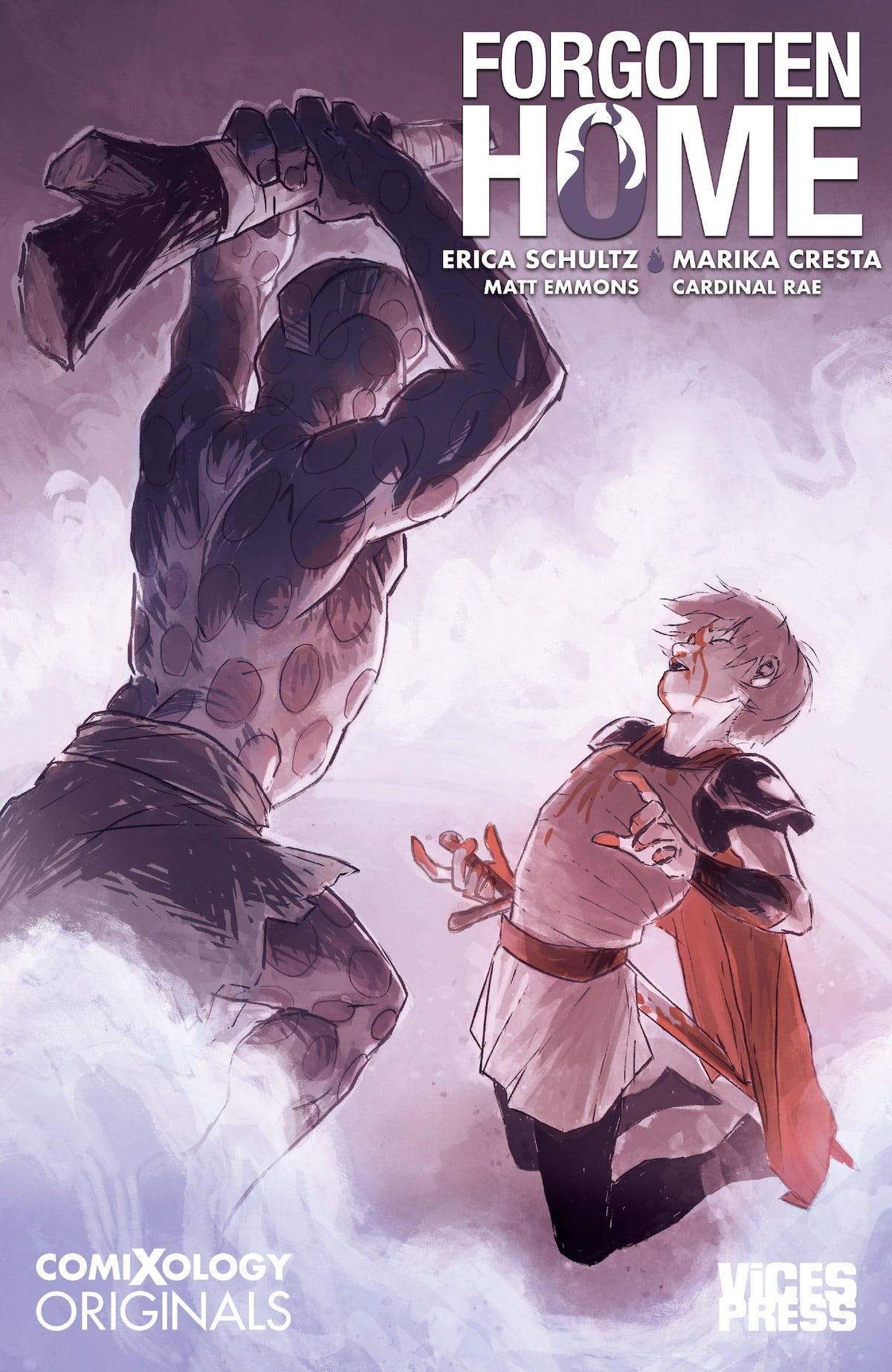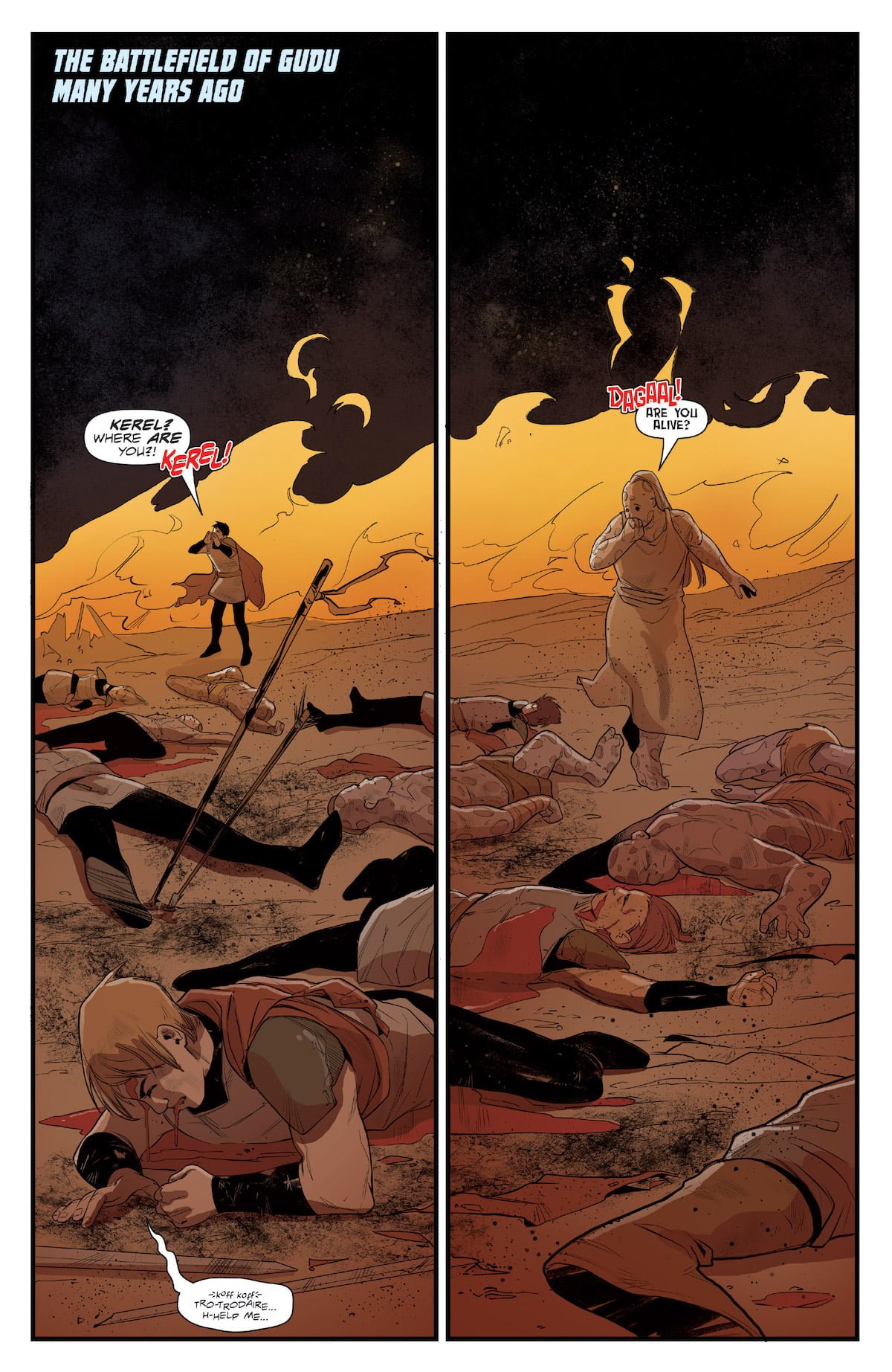 With Forgotten Home #7 being released today, the penultimate issue of the 8-issue comic maxi-series, writer Erica Schultz talked in an interview about the genesis of the project, which she said is ultimately about “complicated family relationships” that also happens to have “swirly purpose magic” and “incredible Syd Meade-inspired architecture” due to the skills of artist Marika Cresta.
With Forgotten Home #7 being released today, the penultimate issue of the 8-issue comic maxi-series, writer Erica Schultz talked in an interview about the genesis of the project, which she said is ultimately about “complicated family relationships” that also happens to have “swirly purpose magic” and “incredible Syd Meade-inspired architecture” due to the skills of artist Marika Cresta.
But as I’ve been reading the series, I’ve been pondering all the implications of its title. Forgotten Home is about our characters’ journey from our Earth to a magical dimension that was once home to the main character. In that sense, it’s literal. But in another sense, the series is also about finding the forgotten home within and how people, young and old, make decisions about the place they truly belong.
I’ve said before that I love that that Forgotten Home focuses on a generational relationship, the toxic grandmother, the damaged daughter, and the granddaughter coming-of-age and accepting the truth of her mother’s past, but it’s also been about how people can choose to keep growing through their lives. And, in the Queen’s case, how she refuses to grow and move on.
But, yes, all these thematic elements are set in a fast-paced story that takes place in a magical dimension where the Queen seeks to utterly crush her enemies and doesn’t care about using children to do it, even her own daughter and granddaughter.
But I’ll let Schultz tell you more about Forgotten Home.
Forgotten Home Interview: Erica Schultz
GeekMom: This setup of Forgotten Home seems standard urban fantasy at first, with a cop after a killer using magic to kidnap teens. But then it quickly subverts expectations with the mother becoming, well, the chosen one. What inspired you to flip the trope a bit?
Erica Schultz: Forgotten Home was a story that originally came out of research for another story I was working on.
First, I was working on the “anti-Frozen” story (y’know, the siblings that hate each other, etc.), and that developed into a not-yet-released story, and some of the leftover bits went into a separate pot with some new stuff added that eventually made their way into Forgotten Home.
That said, I didn’t set out to tell an “urban fantasy” story. I just wanted to tell a story about complicated family relationships and how your past affects your present. There just happens to be incredible Syd Meade-inspired architecture (thank you, Marika), swirly purple magic (thank you, Matt), and cool birthmarks in it (thank you Kevin), too.
 GM: One of the other elements I loved was that Lorraine had told her daughter about magic, had shown her that they had unusual powers, and even allowed Jo to show her friends a little of the magic. These things, again, usually begin with completely hidden family history. Why was it important that Jo know at least a little about who she was?
GM: One of the other elements I loved was that Lorraine had told her daughter about magic, had shown her that they had unusual powers, and even allowed Jo to show her friends a little of the magic. These things, again, usually begin with completely hidden family history. Why was it important that Jo know at least a little about who she was?
ES: Lorraine lived under Rani’s draconian rule and strived to be the complete opposite when it came to parenting. She didn’t want Joanna to be ashamed of who she was, but she also didn’t encourage her to use her magic for fear that using it too much would attract the attention of Rani. Despite all that, Joanna resents Lorraine because… well, what teenage daughter doesn’t resent her parents?
Regarding the decision to tell Mika, that wasn’t entirely Lorraine’s choice. Off-screen, Joanna had had some bad experiences in some other schools (they moved around a lot) when she showed her magic, so it took her a long time to trust Mika with this secret. Mika’s lack of fear with Joanna’s abilities was what really cemented their friendship. Mika loves and embraces Jo for who she is… which is why (spoiler) when Jo is wiped from Mika’s memory, the loss of that friend makes Jo reconsider her decisions.
GM: The story is generational: sister against sister, mother against daughter against daughter? How do you see the conflicts between the three generations? Is there hope for Lorraine and Joanna to fully repair their relationship?

ES: At its core, Forgotten Home shows us three strong women (four, if you include Kralista) all vying for authority over their own lives. They all have different ideas of what their lives should be like, and whether or not those notions gel with society, the will of others or even the fates is what gets worked out through the eight issues.
Finding your place in the world is tough. Sometimes it takes sacrifice; sometimes it takes conquering.
The story VERY loosely mirrors the generational mud-slinging that occurs on social media these days, as well as the cultural and socio-economic battles that play out on our daily feeds. Joanna and the rest of the children from Earth are coming to Jannada blinded by these terrific powers they’re given and not realizing the responsibility and consequences of these new abilities.
“Here’s cool magic powers!”
“Great!”
“Yeah, but you’re going to have to use them only to fight in a pointless war.”
“Huh?”
At their worst, Lorraine and Joanna have a better relationship than Lorraine and Rani ever did. Jo didn’t grow up with the pressure of leading an army like Lorraine did. That, in and of itself, makes that mother/daughter relationship stronger.
At the same time, teenagers are brats (I admit to being one of them, so long ago), and there’s going to be conflict. The #1 thing that kids want, no matter the age, is control and agency over their own lives. Joanna sees Jannada as a place where she can have that, despite not knowing more than a cursory fairy tale about her mother’s homeworld. Once she’s there, though, Joanna realizes what a huge responsibility she has.
I’m not going to spoil anything, but let’s just say that there’s always hope for reconciliation if both parties are willing.
GM: On one level, Forgotten Home is an adventure fantasy of warring factions trying to find peace. But on another, it’s about the cost of war, about the damage done to everyone who fights. Even the Queen is shown as being damaged and traumatized as a motivation. What led you to this theme?
ES: There are a lot of Hollywood-type stories that have happy endings and neat plots. Despite loving those, life isn’t neat and neither are families and relationships. I wanted to put believable characters with real stakes and real conflict in Jannada, a place where it seems anything is possible. I also wanted to show that even the hero makes mistakes and has to atone for them.
Lorraine is considered the “hero” of this story, but she’s by no means perfect. Some of the best characters are ones that make mistakes. And, as in real life, mistakes happen, but what you do to make up for them and learn from them is what really shows your character.
Trauma is powerful, and it can lead some to great compassion and others to great cruelty. Despite how high we are on Maslow’s Hierarchy, we’re all just trying to survive. That includes someone as lofty as Rani to someone as far down the social ladder as Dagaal. Despite trauma, Rani’s actions are inexcusable.
GM: Do you see the Queen–who’s committed murder–as utterly irredeemable or someone deserving of pity?
ES: I don’t think Rani is either. I don’t pity her because she’s knowingly been cruel. Peace was attainable and manageable under her parents’ and sister’s rules. She was the one who shattered that with a selfish and demeaning act.
At the same time, I don’t know if she’s redeemable. I want to believe everyone is, but her consistency in behavior makes her pretty ruthless. She justifies everything as being for the survival of her people, but we know that’s just a smokescreen for her racist beliefs.
GM: A last question about the creative process–was anything done differently with the look of the story knowing that it would be digital-only rather than print? Anything you and the artist took into account that changed the look/feel of the comic?
ES: Color-wise, we wanted something that would really pop. The screen displays on tablets and phones are so great these days, we wanted something that would really take you in whether you were in ComiXology’s Guided View format or not. Matt Emmons and the color assistants really nailed this.
Otherwise, we approached this project like any other. Marika Cresta worked digitally throughout giving us a real preview of how the book was going to work. Her linework is really amazing, and the expressions and acting on the characters really came through.
I did have some scripts written in notebooks, à la analog, but, no, we didn’t really do anything differently than how a print comic is put together. I think that’s important for people to take note of, too. I know some people thought that with the onset of digital comics, print comics were going to die off, but as comiXology has shown, the storytelling is still there, it’s just in a more compact form.
I do want to take a moment to thank Chip, Dane, Tia, Bryce, Pamela, David, and the rest of the terrific cast of characters at comiXology and Superfan Promotions for helping get Forgotten Home out there in the world.
Thanks to Yissell Ayala for her beautiful gown designs and Kevin Maher for his amazing logo creation. Thanks to Cardinal Rae for lettering and production, and thank YOU, Corrina, for giving the book a try and liking what you read.
Note: You can find the first seven issues of Forgotten Home for sale at Comixology for $2.99 each. I’ve read it already and cannot wait for the conclusion.



When in need of online Academic writing help, check them out essaysnassignments.co.uk is among the top academic writing company in the UK, Providing high-quality Academic writing work to students.